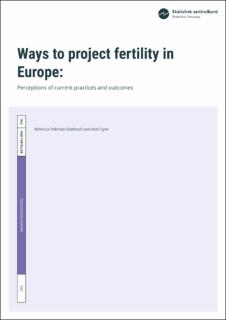| dc.description.abstract | National statistical offices responsible for population projections should regularly evaluate their work. Norway is currently considering changing the way fertility is projected. To establish a solid basis for deciding the way forward, this paper describes the different ways various European countries project fertility in their national population projections. Data were collected in two steps: First, statistical offices in Europe were asked to respond to a questionnaire regarding their current practices. The results were summarized qualitatively and quantitatively. The different methods used by the participating countries were categorized into four broad groups: 1) Model-based deterministic projections; 2) Model-based stochastic projections (frequentist and/or Bayesian); 3) Expert-based projections; 4) Other. A descriptive analysis of similarities and differences was performed to assess which methods were most common, how satisfied the statistical offices were with their method, the public availability of documentation, and the extent to which the accuracy of the projections was regularly assessed. Second, eight countries were selected for a more in-depth analysis. These countries take different approaches to projecting fertility, illustrating the range of options available and in use across Europe. We examined readily available information and documentation online, as well as reports and journal articles. For comparison purposes, this study also includes the fertility projection methods utilized by Eurostat and the UN. Some strengths and weaknesses associated with the different methods are presented, discussing both comments and feedback from statistical offices as well as those which emerge as part of the comparisons made in this study. In summary, a wide variety of methods are currently used. Whereas some countries are satisfied with their methods, documentation and results, others are actively working to improve their projections and outputs. It is hoped this study will act as a useful resource for individuals and agencies considering changing the way they project fertility, while perhaps also facilitating cross-national learning and knowledge exchange. | en_US |

